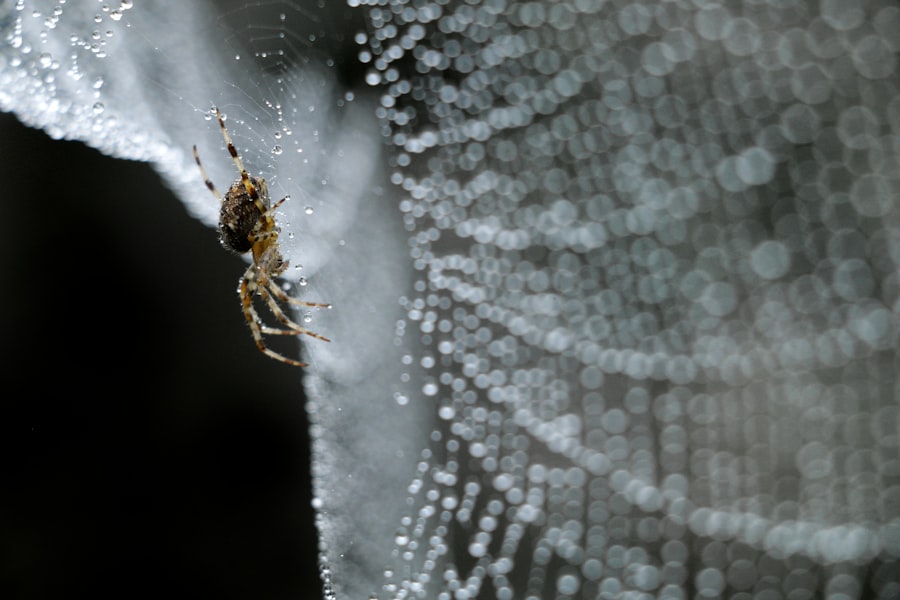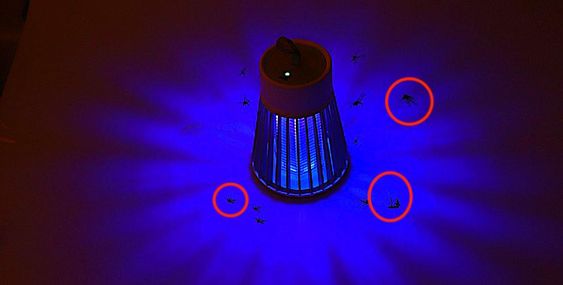
Mosquitoes are not just annoying pests that ruin outdoor activities; they also pose a significant health risk. Mosquitoes are known carriers of diseases such as malaria, dengue fever, Zika virus, and West Nile virus. In fact, mosquitoes are responsible for more human deaths than any other animal on the planet. This is why mosquito control is crucial in preventing the spread of these diseases.
One effective solution for mosquito control is the use of mosquito traps. Mosquito traps are devices designed to attract and capture mosquitoes, reducing their population and minimizing the risk of disease transmission. These traps work by luring mosquitoes with various attractants such as light, heat, carbon dioxide (CO2), or chemicals that mimic human scent. Once attracted, the mosquitoes are either trapped or killed, depending on the design of the trap.
How Mosquito Traps Work: Understanding the Science Behind Them
There are several types of mosquito traps available on the market, each utilizing different mechanisms to attract and capture mosquitoes. One common type is the electric mosquito trap. These traps use a combination of light and heat to attract mosquitoes. When the mosquitoes come into contact with an electrified grid, they are electrocuted and killed.
Another type of mosquito trap is the CO2 mosquito trap. These traps mimic human breath by releasing carbon dioxide, which attracts mosquitoes. Once near the trap, the mosquitoes are either sucked into a net or trapped in a container.
UV light mosquito traps are also popular options. These traps use ultraviolet light to attract mosquitoes, which then get trapped in a container or killed by an electric grid.
Electric Mosquito Traps: The Pros and Cons
Electric mosquito traps have their advantages and disadvantages. On the positive side, they are effective at killing mosquitoes quickly and efficiently. They can cover a large area and are relatively low maintenance. Electric mosquito traps are also safe to use around children and pets, as they are designed to prevent accidental contact with the electrified grid.
However, there are also some drawbacks to electric mosquito traps. They can be noisy, especially when mosquitoes are being electrocuted. Additionally, these traps may not be as effective in areas with a high mosquito population, as they can only capture a limited number of mosquitoes at a time. Electric mosquito traps also require a power source, which may limit their use in certain outdoor settings.
CO2 Mosquito Traps: The Most Effective Design?
CO2 mosquito traps are considered one of the most effective designs for capturing mosquitoes. These traps utilize carbon dioxide, which is a powerful attractant for mosquitoes. By releasing CO2, the traps mimic human breath and lure mosquitoes towards them.
Once near the trap, the mosquitoes can either be sucked into a net or trapped in a container. Some CO2 mosquito traps also use additional attractants such as heat or chemicals that mimic human scent to enhance their effectiveness.
Compared to other types of mosquito traps, CO2 traps have been shown to capture a larger number of mosquitoes. They are particularly effective in areas with high mosquito populations or in locations where other attractants may not be as effective.
UV Light Mosquito Traps: Are They Worth the Investment?
UV light mosquito traps are another popular option for mosquito control. These traps use ultraviolet light to attract mosquitoes, which then get trapped in a container or killed by an electric grid.
UV light mosquito traps have their advantages and disadvantages. On the positive side, they are relatively affordable and easy to use. They are also safe for indoor use and do not require any chemicals or attractants.
However, UV light mosquito traps may not be as effective as other types of traps in capturing mosquitoes. While they can attract mosquitoes towards them, they may not always be successful in trapping or killing them. Additionally, these traps may not cover a large area and may need to be placed strategically to maximize their effectiveness.
Natural Mosquito Traps: DIY Solutions to Keep Mosquitoes at Bay

For those who prefer natural alternatives, there are DIY mosquito traps that can be made at home using common household items. These traps are typically designed to attract mosquitoes using natural substances such as sugar, yeast, or vinegar.
One popular DIY mosquito trap is the sugar and yeast trap. To make this trap, mix sugar and yeast with warm water in a container. The mixture produces carbon dioxide, which attracts mosquitoes. Once near the trap, the mosquitoes get trapped in the container.
Another natural mosquito trap is the vinegar trap. Simply fill a container with vinegar and cover it with plastic wrap. Poke small holes in the plastic wrap to allow mosquitoes to enter the container. The mosquitoes are attracted to the vinegar and get trapped inside.
While these natural mosquito traps can be effective in reducing mosquito populations, they may not be as efficient as commercially available traps. They may also require more maintenance and may not cover a large area.
Indoor Mosquito Traps: Choosing the Right Design for Your Home
When it comes to indoor mosquito traps, there are several options to choose from. One popular design is the electric mosquito trap, which uses light and heat to attract mosquitoes and then kills them with an electrified grid. These traps are safe for indoor use and can cover a large area.
Another option is the CO2 mosquito trap, which releases carbon dioxide to attract mosquitoes. These traps can be effective in capturing mosquitoes indoors, especially in areas with high mosquito populations.
UV light mosquito traps are also suitable for indoor use. They use ultraviolet light to attract mosquitoes, which then get trapped in a container or killed by an electric grid.
When choosing an indoor mosquito trap, it is important to consider factors such as the size of the area to be covered, the noise level of the trap, and the ease of maintenance. It is also important to ensure that the trap is safe for use around children and pets.
Outdoor Mosquito Traps: Protecting Your Yard and Garden
Outdoor mosquito traps are designed to protect your yard and garden from mosquitoes. These traps are typically larger and more powerful than indoor traps, as they need to cover a larger area.
One popular design for outdoor mosquito traps is the CO2 trap. These traps release carbon dioxide to attract mosquitoes, which then get trapped in a container or sucked into a net. CO2 traps are effective in capturing mosquitoes outdoors, especially in areas with high mosquito populations.
Another option for outdoor mosquito control is the electric mosquito trap. These traps use light and heat to attract mosquitoes, which then get killed by an electrified grid. Electric mosquito traps can cover a large area and are relatively low maintenance.
When choosing an outdoor mosquito trap, it is important to consider factors such as the size of your yard or garden, the level of mosquito activity in your area, and the ease of maintenance. It is also important to ensure that the trap is weatherproof and can withstand outdoor conditions.
Portable Mosquito Traps: Ideal for Camping and Outdoor Activities
For those who enjoy camping or engaging in outdoor activities, portable mosquito traps are a convenient solution for mosquito control. These traps are designed to be lightweight and easy to carry, making them ideal for travel.
There are several types of portable mosquito traps available on the market. Some use CO2 or attractants such as heat or chemicals to lure mosquitoes towards them. Once near the trap, the mosquitoes can either be trapped in a container or killed by an electric grid.
Portable mosquito traps are effective in reducing mosquito populations in outdoor settings. They are easy to set up and can provide protection against mosquitoes while camping or engaging in outdoor activities.
Smart Mosquito Traps: The Future of Mosquito Control?
Smart mosquito traps are the latest innovation in mosquito control. These traps utilize advanced technology such as sensors, cameras, and connectivity to monitor and control mosquito populations.
Smart mosquito traps work by detecting the presence of mosquitoes and then activating the appropriate mechanism to capture or kill them. Some traps can even send real-time data to a smartphone or computer, allowing users to monitor mosquito activity and adjust trap settings accordingly.
While smart mosquito traps are still relatively new, they have the potential to revolutionize mosquito control. By using data and analytics, these traps can provide more targeted and efficient mosquito control, reducing the reliance on chemicals and other traditional methods.
Mosquito control is crucial in preventing the spread of diseases carried by mosquitoes. Mosquito traps are an effective solution for reducing mosquito populations and minimizing the risk of disease transmission. There are several types of mosquito traps available, each with its own pros and cons.
Electric mosquito traps use light and heat to attract mosquitoes and kill them with an electrified grid. CO2 mosquito traps release carbon dioxide to attract mosquitoes, which then get trapped or sucked into a net. UV light mosquito traps use ultraviolet light to attract mosquitoes, which then get trapped or killed by an electric grid.
Natural mosquito traps can be made at home using common household items, but may not be as efficient as commercially available traps. Indoor and outdoor mosquito traps are designed to protect specific areas, while portable mosquito traps are ideal for camping and outdoor activities. Smart mosquito traps utilize advanced technology to provide more targeted and efficient mosquito control.
In conclusion, mosquito control is essential for public health, and mosquito traps play a vital role in achieving it. By understanding the different types of mosquito traps available and their pros and cons, individuals can make informed decisions about which trap is best suited for their needs. Whether it’s an electric trap, CO2 trap, UV light trap, natural trap, indoor trap, outdoor trap, portable trap, or smart trap, each has its own unique benefits and considerations. Ultimately, the goal is to reduce mosquito populations and minimize the risk of disease transmission, making mosquito traps an important tool in achieving this objective.

